Understanding Outpatient Programs After Detox
Outpatient programs after detox allow you to receive addiction treatment while maintaining your daily responsibilities. These programs provide structured support and therapy sessions during scheduled hours, letting you return home each day.
What is a Personalized Detox Plan?
A personalized detox plan considers your:
- Specific substance dependency
- Medical history
- Mental health needs
- Work and family commitments
- Support system strength
The Importance of Medical Supervision
Medical supervision remains crucial during outpatient detox. Licensed healthcare professionals monitor your progress, adjust medications, and address any complications. Your treatment team includes:
- Doctors specializing in addiction medicine
- Licensed therapists
- Certified counselors
- Support staff
Our Approach at Cedar Oaks Wellness Center
At Cedar Oaks Wellness Center, we create individualized treatment plans that align with your recovery goals. Your outpatient program might include:
- Individual counseling sessions
- Group therapy meetings
- Medication management
- Life skills training
- Relapse prevention education
Factors Affecting Outpatient Detox Success
The success of outpatient detox often depends on your commitment to treatment and the stability of your home environment. It’s important to understand the difference between detox and rehab, as each stage supports addiction recovery in unique ways. For more information on this topic, you can explore our detailed guide on what’s the difference between detox and rehab.
Next Steps Towards Recovery
If you’re ready to take the next step towards recovery, don’t hesitate to reach out. You can contact Cedar Oaks Wellness Center for more information on our outpatient programs and how we can assist you in your journey towards sobriety.
What Happens After Detox?
The time after detox comes with its own set of physical and mental challenges. Your body starts to heal naturally, trying to find balance again after being dependent on a substance.
For a complete understanding of this phase, you can check out what happens after detox which explains important next steps for your recovery journey towards lasting sobriety.
Common Post-Detox Symptoms:
- Sleep pattern disruptions
- Mood fluctuations
- Energy level changes
- Physical discomfort
- Cravings
These symptoms are part of what’s known as post-acute withdrawal syndrome, which can occur after the initial withdrawal phase.
Withdrawal Timelines for Different Substances
Different substances have different withdrawal timelines. For detailed information on these, refer to this resource on withdrawal timelines and treatments:
- Alcohol: 24-72 hours of acute symptoms, potential prolonged effects for weeks
- Opioids: 5-7 days of intense symptoms, gradual decrease over weeks
- Stimulants: 7-10 days of crash period, followed by extended psychological symptoms
When Outpatient Detox is Suitable
Outpatient detox suits specific situations:
- Mild to moderate substance dependency
- Stable home environment
- Strong support system
- No severe medical complications
- Reliable transportation access
Your medical history, substance use patterns, and living situation help determine if outpatient detox matches your needs. Regular check-ins with healthcare providers track your progress through withdrawal management.
Length and Structure of Outpatient Programs
Outpatient programs offer flexible treatment schedules ranging from 30 days to 6 months, depending on your recovery needs. These programs typically require 10-12 hours of weekly commitment spread across multiple sessions.
Standard Outpatient Programs Structure:
- Morning or evening sessions
- 2-3 hour treatment blocks
- 3-5 days per week attendance
- Individual counseling appointments
- Group therapy sessions
In contrast to inpatient programs, which maintain a strict 24/7 schedule with constant medical supervision, outpatient programs allow you to maintain daily responsibilities. Your treatment schedule adapts to work hours, family obligations, and other commitments. You can learn more about the key differences between inpatient and outpatient rehab in Ohio to choose the best treatment for lasting recovery.
Program Intensity Levels:
- Partial Hospitalization (PHP): 6-8 hours daily
- Intensive Outpatient (IOP): 3-4 hours per session
- Standard Outpatient: 1-2 hours per session
The length of your program depends on factors like substance use history, co-occurring disorders, and progress in recovery. Many people start with intensive schedules and gradually reduce treatment hours as they build stronger recovery skills.
Benefits and Risks of Outpatient Programs After Detox
Outpatient programs offer distinct advantages for individuals seeking addiction treatment:
Key Benefits:
- Maintain daily responsibilities while receiving treatment
- Cost-effective compared to inpatient programs
- Sleep in your own bed each night
- Practice recovery skills in real-world settings
- Keep regular contact with family and support system
Potential Risks:
- Higher chance of relapse due to access to substances
- Limited medical supervision during withdrawal
- Challenging for those with severe addictions
- Not recommended for alcohol and benzodiazepine detox
- Requires strong self-discipline and commitment
The success of outpatient programs depends on several factors:
- Severity of addiction
- Type of substance used
- Personal medical history
- Home environment stability
- Access to reliable transportation
Individuals with severe alcohol or benzodiazepine dependencies need specialized medical supervision due to potentially dangerous withdrawal symptoms. These cases typically require inpatient care to ensure safety during the detox process.
However, for those who successfully complete a detox program, transitioning into sober living homes can provide a supportive environment that fosters recovery and reduces the risk of relapse.
Support System and Environment in Outpatient Care
A strong support system is essential for successful outpatient treatment. Your family, close friends, and trusted colleagues form a network of accountability and encouragement throughout your recovery journey.
Key Elements of a Strong Support System:
- Regular check-ins with family members
- Participation in support group meetings
- Access to counselors during challenging moments
- Connection with peers who understand your experiences
Creating a safe home environment involves removing triggers and establishing healthy boundaries. This includes:
- Eliminating alcohol and substances from your living space
- Setting clear rules with household members
- Designating specific areas for relaxation and self-care
- Maintaining a structured daily routine
Your comfort level with treatment staff and fellow clients affects your recovery progress. Building trust with counselors and connecting with peers who have similar experiences fosters a supportive therapeutic environment. These relationships offer:
- Honest feedback and guidance
- Shared coping strategies
- Emotional support during difficult times
- Opportunities for personal growth through group interactions
In cases where substance use disorders are present, Medication-Assisted Treatment can be an effective option to consider. This approach is one of the various ways we treat such disorders at Cedar Oaks Wellness Center, located in Cincinnati.
For those seeking comprehensive support for addiction, Cedar Oaks Wellness offers compassionate care through their Ohio drug and alcohol rehab programs.
Cost Considerations and Choosing the Right Program
The financial aspect of addiction treatment plays a crucial role in program selection. Outpatient programs typically cost $1,000 to $10,000 for a three-month program, while inpatient treatment ranges from $20,000 to $60,000 for a 30-day stay.
Key factors to consider when selecting a program:
- Insurance coverage – Many insurance providers offer better coverage for outpatient treatment
- Program intensity – Higher levels of care increase costs but provide more comprehensive support
- Treatment duration – Longer programs cost more but may offer better long-term outcomes
- Additional services – Specialized therapies, medical care, and medication management affect pricing
Beyond cost, evaluate these essential program elements:
- Treatment methods and evidence-based practices
- Staff credentials and expertise
- Success rates and patient testimonials
- Location and accessibility
- Available aftercare support
The right program balances your clinical needs with financial capabilities. Some facilities offer sliding scale fees, payment plans, or financial assistance to make treatment more accessible.
Long-Term Recovery and Relapse Prevention Strategies in Outpatient Care Settings
Successful long-term recovery requires a strong relapse prevention plan. Outpatient care settings offer specific tools and strategies to maintain sobriety:
Essential Recovery Components
- Regular therapy sessions to address triggers
- Group meetings for peer support and accountability
- Stress management techniques
- Life skills development
- Healthy coping mechanisms
Effective Relapse Prevention Strategies
- Creating a structured daily routine
- Building a sober support network
- Identifying and avoiding high-risk situations
- Developing healthy lifestyle habits
- Learning to recognize warning signs
Your outpatient program will help you create a personalized relapse prevention plan. This plan adapts as you progress through recovery, addressing new challenges and triggers that emerge. Many programs incorporate mindfulness techniques, cognitive behavioral therapy, and regular check-ins to strengthen your recovery foundation.
The skills learned in outpatient care become valuable tools for maintaining sobriety. You’ll practice these strategies in real-world situations while having immediate access to professional support when needed.
Incorporating mindfulness practices into your routine can significantly enhance your recovery journey. These practices not only promote relaxation but also increase self-awareness, helping you better understand your thoughts and emotions, which is crucial in preventing relapse.
Are Outpatient Programs the Right Choice for Your Post-Detox Care?
Your path to recovery is uniquely personal. The decision between outpatient and inpatient programs after detox, like the safe drug detox program offered by Cedar Oaks Wellness, depends on several key factors:
- Your substance use history and severity
- Home environment stability
- Support system strength
- Work and family commitments
- Financial resources
- Transportation availability
A qualified healthcare professional or addiction specialist at Cedar Oaks Wellness can help you evaluate these factors. They will assess your specific needs, consider your recovery goals, and recommend the most appropriate treatment path, whether it be outpatient addiction treatment or another form of care.
Remember: The right program is one that aligns with your circumstances and sets you up for long-term success. Schedule a consultation today to discuss your options, including our specialized addiction therapy programs, and take the next step in your recovery journey.

